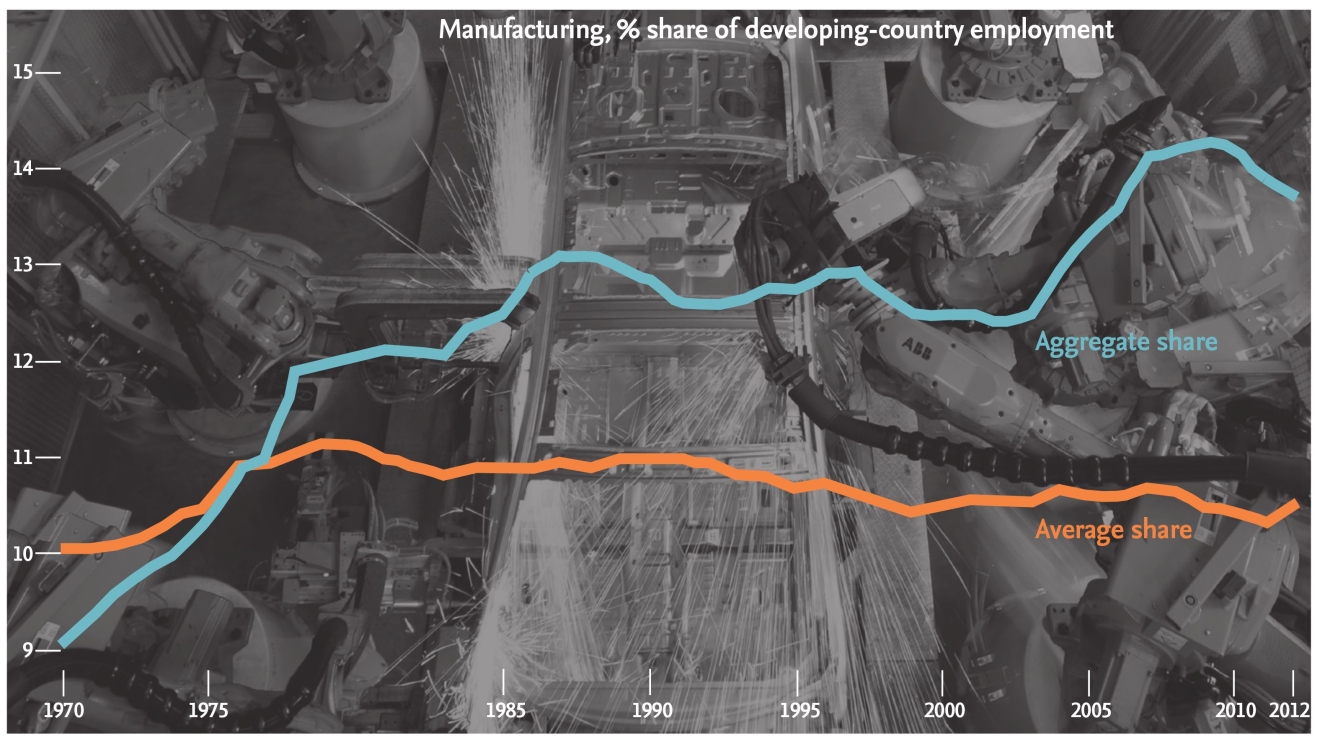

The importance of manufacturing
19 January 2018 Charles ARTHUR

UNIDO’s number-crunching shows that manufacturing’s aggregate share of developing country employment has consistently increased over the last five decades
It has long been accepted that modern economic growth requires moving resources out of agriculture into industry, and then out of industry into services. The hypothesis was first advanced by economist Simon Kuznets in the 1950s. The expectation is that industrialization will carry poor countries into prosperity, and that this will be followed by a further transition from industry to services.
Recently, some economists, such as Dani Rodrik of Harvard University, have speculated that, in today’s emerging economies, industry’s share of employment is peaking at a lower level than it used to do, and at an earlier point in their development.
Premature deindustrialization
In his 2015 paper, Premature Deindustrialization, Rodrik wrote: “Premature deindustrialization is not good news for developing nations…. The consequences are already visible in the developing world. In Latin America, as manufacturing has shrunk informality has grown and economy‐wide productivity has suffered. In Africa, urban migrants are crowding into petty services instead of manufacturing, and despite growing Chinese investment there are as yet few signs of a real resurgence in industry.”
However research conducted by the United Nations Industrial Development Organization (UNIDO) questions the notion that the developing world has deindustrialized.
According to Nobuya Haraguchi, a UNIDO Industrial Research Officer, the research shows that “the importance of manufacturing in economic development has not changed or, more likely, has increased over the last 40 years”
Aggregate rather than average
Haraguchi explains that the deindustrialization argument is largely based on an analysis that shows that since 1990, manufacturing output as share of a country’s economy and manufacturing jobs’ share of total employment have declined across all income levels. This analysis is based on adding the shares of developing countries together and then calculating an average.
However, Haraguchi says, this average picture “does not really show whether the role of manufacturing in economic development has changed”.
Writing in UNIDO’s discussion magazine, Making It, Haraguchi provides the following example: “Let’s say there are only two developing countries in the world: Country A with population of 1,000 and Country B with 100 people. Before 1990, out of 1,000 people, Country A employed 230 in the manufacturing sector, and Country B employed 25 out of 100 people in the manufacturing sector. After 1990, with no change in population in either country, Country A employed 300 in the manufacturing sector, while in Country B the number declined to 15.”
“If we look at the average share of manufacturing employment, it declined from 24% to 22.5%. However, this does not mean that manufacturing employment has decreased relative to agriculture and services. In this example, the number of people employed in manufacturing increased from 255 to 315, representing an aggregate increase of 23% to 28.6%.”

Manufacturing’s aggregate share
Haraguchi’s number-crunching shows that manufacturing’s aggregate share of developing country employment has consistently increased over the last five decades.
Looking ahead, Haraguchi speculates that the recent successful industrial upgrading in populous large countries like the BRICS (Brazil, Russia, India, China and South Africa) is leaving more space for low and lower-middle-income countries to develop labour-intensive industries. In this case, manufacturing would then perhaps become more, not less, important for low and lower-middle income countries.
He recommends that developing countries, rather than turning away from manufacturing and abandoning the path of economic development through industrialization, should instead emulate other countries’ experience of rapid industrialization in recent years.